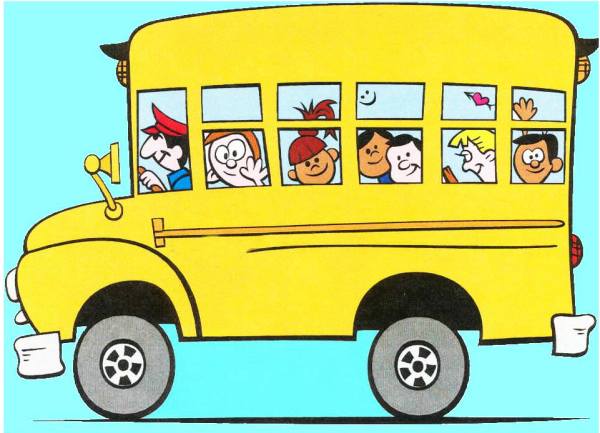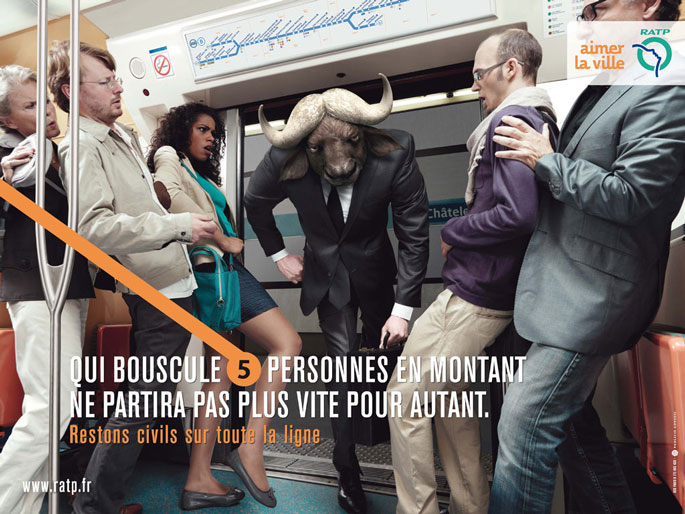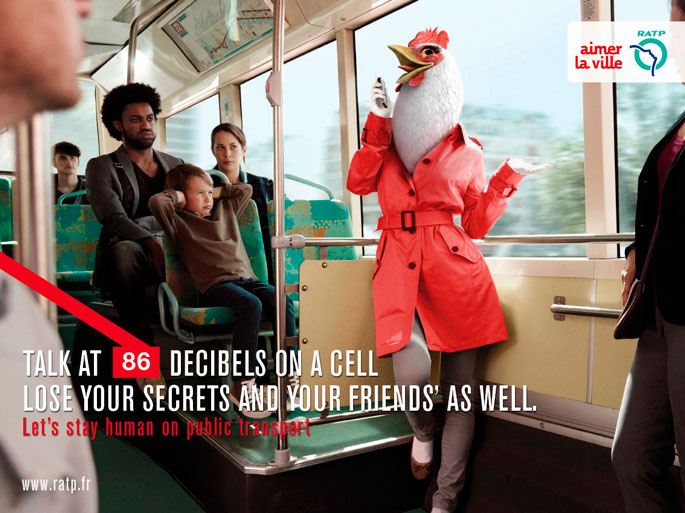Rules of conduct make our daily chores easier. And the sooner a little growing up person is accustomed to basic social norms, the easier it will be for him to understand why it is necessary to act this way and not otherwise.
A bus, a fixed-route taxi or a train compartment is a kind of microcosm, where both conventions and clearly regulated norms are accepted. Adults also obey them. If kindergarten, street or shop is constantly observed by a child, then transport is often not so familiar to children. They get there for a short time and leave, often never again meeting their fellow travelers. The rules of conduct in public transport include not only the norms of etiquette, but also the observance of safety. This also applies to behavior in a regular taxi. We note right away that a taxi must be equipped with a special child seat, there are even special children's taxis, for example, TikTaktaxi.ru offers just such a service.
So, there are two groups of rules that can be introduced to the child - the rules of etiquette and safety rules.

Safety rules imply careful entry into public transport. Pushing, climbing forward and ignoring the holders on the doors is unacceptable. Speed \u200b\u200bis not the main thing, you need to explain to the child. On the doorstep of the transport, the running and climbing competitions end. It is also possible to help hold the incoming bags if the child is already of school age and is able to coordinate well.
A stable fit while driving is a guarantee of the child's safety. It is important to immediately stop all attempts to run and jump around the cabin of a bus or tram. The vehicle is already moving itself, and at what minute it can brake abruptly, sometimes even the driver himself does not know. But there are many of them on the road. This is fraught with falls and injuries to the child. If there are no seating places, children need to be shown that a stable position on their feet is a firm grip on the handrails and legs apart, without additional swinging. It is simply necessary to convey to the child that safety also depends on himself.
The rules of etiquette, in general, are simple and straightforward - it is impossible to shout, speak loudly and spoil the appearance of transport. Littering, hanging on the handrails and preventing other passengers from moving through the cabin is also a sign of bad manners. Transport is public because everyone uses it together, respecting each other. To give way to the elders, to let the elderly and women with other young children go ahead - this can be taught to a child from school age. In addition to explanations, younger children will need quiet games during the trip. Let it be little nursery rhymes or finger games. The last kids are very fond of and can play in them for a very long time with their parents. When traveling with small children, you should always have both your favorite toy and hygiene products in stock. You need to talk and occupy the baby in an undertone, without interfering, and without distracting everyone around you. But more often than not, children just love to look out the window, so why not tell your child what is happening there. Soon he himself will begin to ask why the street is named that way, and why trees are being planted along the road - all you have to do is take the time to talk, and illustrations for him will flash outside the window.
However, the rules are necessary for everyone, and if the parents themselves do not strictly follow them, you should not expect the child to fulfill them. Since all upbringing is reduced to imitation of adults, and not to strict orders and notations.
Everyone should know the rules of conduct in public transport. After all, a person very often uses this type of transport when traveling to work, school, on business or on a visit. And even if your family drives their own car more, you still sometimes have to use public transport to reach your destination.
You can start a lesson with your child about the rules of behavior in public transport with the following words: "Every day you become more and more mature. First, your mother takes you to kindergarten, then you will drive yourself to school, to the cinema, to the theater. Every day you will have to use public transport. . Do you know how a well-mannered person behaves in transport? Let's see? "
According to the rules of etiquette, when entering city transport, men must let all women pass ahead of themselves.
Every self-respecting person will not push all incoming passengers with his elbows and squeeze in first to take an empty seat. First of all, it will allow the elderly, disabled people, pregnant women and women with children to pass. Helps them up to the salon.
Do not stop at the entrance (if you do not get off at the next stop), but go to the middle of the cabin - leave room for the people who come after you.
When entering transport, you need to remove backpacks and satchels so as not to hurt (sometimes even get dirty) people.
Always make way for the elderly, toddlers, and women with heavy bags when you have sat down and there are no more empty seats.
Public transport does not shake off snow or raindrops from clothes, does not eat, does not enter with ice cream in hand, and, of course, does not smoke.
In the salon, they do not comb their hair, do not clean their nails, do not pick their nose, teeth, ears ...
Take care of your eyesight - do not read while driving.
Do not stare at the passengers, do not lean on them with your whole body.
If the salon is overcrowded, you are standing and you are uncomfortable holding on to the handrails because you have a cake or flowers in your hands, do not be shy - you can politely ask those sitting to hold them.
In transport, it is indecent to laugh and talk loudly, discuss your problems on the phone and argue publicly with friends. If a person has made a remark to you, don't be rude, take it to yourself!
Do not stain the seats in the cabin, much less paint them.
Domestic animals: cats, birds, small rodents are usually transported in special cages; dogs - certainly in a muzzle.
You need to prepare for the exit in advance (especially if there are a lot of passengers). Ask those in front: "Do you get off at the next stop?" Apologizing, ask permission for you to go through, but in no case push apart, making your way, "taking water in your mouth."
If you are traveling with a girl, then you should try to get out first, help your companion down the steps, while giving her a hand.
Be friendly, attentive and polite!
We hope that you have learned the rules of conduct in public transport well and now you will always remember them on any trip around the city.
Modern society is trying more and more to make its financial situation as safe and stable as possible and, I must say, quite successfully. Many are engaged in decent business and can afford to buy houses, apartments, cars and other things that emphasize the high level of wealth. The road space is clogged with private cars, but, nevertheless, there are people who actively use public transport, making daily commutes to work and home. In order to avoid conflict situations, certain rules of behavior in public transport were invented, the knowledge and implementation of which also indicates that a person has an elementary upbringing.
The rules of conduct in public transport suggest that a man must give way to a woman. Fortunately, modern representatives of the stronger sex still remember about decency, so a young man giving up his place to a girl is not uncommon. It is considered unacceptable not to invite pregnant women, women with children, the elderly and disabled people to take a seat. Although, watching an elderly grandmother, who can hardly hold onto the handrail, and at the same time pretending to be a very enthusiastic person, a guy is also quite a frequent occurrence.
According to etiquette, and the rules of conduct in public transport are no exception, when entering a bus, trolleybus, tram or subway car, you need to say hello to your comrades in the cabin. You can also greet passengers who are not familiar, but have become quite frequent travel companions. Of course, you should not shout the words of greeting to the whole salon, you just need to nod your head or smile, but at the same time, visual contact must be established. As for conversations in general, the rules of conduct in transport imply silence. It is considered indecent to talk loudly about your problems, especially if they are of a personal nature.
When entering and exiting, the public transport rules must also be followed. According to them, entering the salon of a bus, trolleybus, tram or subway car, a man must let a woman go ahead. The first to have the right to enter are citizens with small children, disabled people, as well as women in position.
If the husband and wife use public transport, then there is nothing wrong with the fact that the husband, in addition to his wife, will let several more people go ahead. At the same time, going inside, he should not push everyone with his elbows to get to his wife. If, nevertheless, the spouses were next to each other, then when leaving the husband must go ahead, thereby freeing the way for the companion. This, of course, must be done carefully and politely, asking the surrounding passengers for permission to pass, and not pushing them. Coming out of the transport, a man to his lady, helping her out. In a similar way the younger should also do in relation to the elders. A manifestation of good upbringing will also be help when entering or leaving those who need it, i.e. elderly people, disabled people, people with heavy bags, even if they are not familiar.
The rules of conduct on water transport are not particularly different from any other rules of conduct concerning the rest. The main difference is the observance of safety. It is only necessary to board the plane by the ladder, no other options are allowed. If the cabins involve not one, but several people, then in the case of a neighborhood with a stranger, you need to introduce yourself to him. Also, in this case, it is better to adhere to the elementary ones and not leave behind dirty sink and toilet, and also not litter. You should not initially spoil relations with others, and even more so on purpose, because no one knows how life will turn out further.
According to the etiquette observed when entering any type of public transport, children, women and the elderly, as well as people with disabilities, must be the first to enter. Having expressed a desire to help with boarding, a man must definitely ask permission for this. There is no need to stand in the doorway, thus obstructing the passage of other passengers. Also, you should not climb into the middle of a crowded cabin, pushing other people along the way. If it is not possible to pass the fare to the conductor, you can politely ask one of the passengers about it. When entering public transport, you should remove bulky bags or backpacks from your shoulders so as not to hurt people with them.
If there is a need to transport bulky luggage using public transport, it should not cause discomfort to others.
Who should make way
There are unspoken rules of civil etiquette, according to which the seats in buses, trolleybuses or trams are intended primarily for the elderly, children and the disabled. If passengers of these categories are seated, and there are still empty seats, they are occupied by women and girls. A man can sit in public transport if nearby passengers do not apply for this seat. First, a man or a young man must ask the passengers standing next to him if they would like to sit down.
Men are obliged to give way to absolutely all women, and women, in turn, must give way to the elderly or disabled.
Rules of conduct inside the transport
Here are the basic rules of conduct in transport:
When traveling with small children, you should monitor their behavior so that they do not disturb other passengers;
- you can read in the cabin, but you should not disturb the rest of the passengers, not touch them with a book or magazine, behave decently and not look into the newspapers of the people sitting next door;
- It is prohibited to talk loudly inside the vehicle, just as it is prohibited to turn on a music player, radio or mobile phone in the cabin;
- it is unacceptable to enter transport with food, seeds or drinks;
- also in transport it is not customary to comb your hair, correct makeup or deal with problems of personal hygiene.
Etiquette when exiting public transport
A man or a young man should be the first to get off a tram, trolleybus or bus, and he should provide the necessary assistance upon exiting to everyone who needs it, for example, women, girls, children or the elderly. You should prepare in advance for exiting the transport. Do not push nearby passengers. You should politely ask if they get off at the next stop.
Date of publication: 10.10.2012A person must follow the rules of etiquette. This is how we differ from animals. Public transport is the place where many people forget about the rules of behavior and decency. Let's fix this serious flaw.
Rule 1. When entering the transport, you need to let the elderly, children, disabled people, women pass in front of you. Moreover, before entering yourself, you need to let other passengers go out.
Rule 2. Sometimes, when entering or exiting a vehicle, you need to help someone. For example, if you see a woman in a stroller, then help her. At the same time, you do not need to do it abruptly and silently. If you want to help someone or lend a hand, then calmly offer your help.
Rule 3. Make way for the elderly, disabled, children and women. In this case, you do not need to get up abruptly. Make it clear to the person that you are giving way to him. You have to say "Please have a seat." Some people react sharply to the word "sit down", motivating it by the fact that they are "sitting" in jail, and they must say "sit down." Of course, you can say what you think is necessary. In response, you should say words of gratitude.
Rule 4... Express your gratitude. If the driver "held back" the transport, seeing how you run to the stop, then be sure to say "thank you" to the driver. There is no need for any personal transitions like "thank you bro." If you were helped to get out / get into the transport, then also say “Thank you”. At the same time, there is no need to say too much. No need to grovel and say grateful tirades, the usual "Thank you" is enough.
Rule 5... In general, healthy men should stand on the bus, and women, disabled people and the elderly should sit. But sometimes it happens that some do not give way, violating the rules of etiquette. If you see a healthy teenager who is not giving way to an older woman, then ask him to give her place. There is no need to threaten or raise your voice. It is enough to say politely, "Young man, please give way to an elderly woman." As a rule, even the most real hooligans give way, because the whole bus / transport / etc will watch them when you ask to give way.
Rule 6. Never express negative emotions. If someone strongly violates the rules of etiquette (does not want to pay the conductor, does not give up his seat), then you do not need to shout at him. Needless to say, the use of force in public transport is not just immoral, but also punishable (an administrative fine for petty hooliganism).
Rule 7. Do not eat or drink anything on public transport. First, you can choke yourself. Second, you can dirty others. By the way, in addition to this, it is strictly forbidden to put on makeup on public transport (it’s strange that anyone would think of this before).
Rule 8. Resolve conflicts. Very often people on public transport start swearing. This usually happens in three cases. If the driver does not drive very carefully, then everyone starts to grumble, "You're not taking firewood!" Sometimes they quarrel with the conductors. But more often than not, conflicts occur due to the fault of the elderly and too “daring” young people. Then the elderly begin to remember the happy Soviet years, and the young try to show their ambition. Your task is to calmly tell such people to calm down.
Rule 9. If you have a large bag or luggage with you, remove it or make it so that it does not get in the way of others. If you have a backpack on your back, then either turn your back to a window or wall, or remove it from your back, otherwise you will hurt and disturb people. In addition, during rush hours, thieves can easily pull out your documents / money / etc from the backpack on your back.
Rule 10. No matter how big you are, you need to not oppress others. Do not spread your legs wide, do not stand directly at the door, etc. If you are sitting, then you do not need to put your knees wide. Moreover, you do not need to sit in one place and put your bag on another. If possible, do not occupy two places at once - take a bag and put it on your lap. If your luggage is very large, then place it on the floor.
Rule 11. If you don't get off at the next stop, then skip other people. If you go out yourself, then try to pass closer to the doors in advance, so as not to run to the doors later, pushing people around. If people prevent you from moving to the door, then tell them in a calm voice to let you through. Or you can ask if they get off at the next stop.
Rule 12. Don't talk loudly with your friends or on the phone. If you saw your friend, then you do not need to shout "Hello!" At the entire transport. Try to speak in a way that doesn't disturb others. Those. yelling loudly will cause discomfort to others, and if you speak too quietly, your interlocutor will not hear you. In addition, other passengers can hear your conversation. Therefore, you do not need to talk about your personal life in public transport.
Regulation 13... There is little space in transport during rush hours. If you are in a very hurry to get somewhere, you can "push through". Otherwise, it is better to wait for the next transport. If you are standing right near the door and you do not have the opportunity to go deeper, then at each stop, get out of the transport in order to let others get out normally. Then you can re-enter with others.
Rule 14. If you read books or newspapers, do not disturb others. In general, reading in public transport is harmful to the eyes.
By the way, now many people have "readers" and smartphones, which greatly facilitates reading in transport. This is much more convenient than holding a large newspaper or a massive book in your hands.
Rule 15. No tricks needed. Some people sit on the seats, but in order not to give up their seats to anyone, they pretend to be dead sleeping. If you need to sit down (your legs, back, etc. hurt badly), then you can calmly tell others about it. No normal person will drive a sick person from their place.
Regulation 16. On the metro, you must follow all of the above rules with a small addition. If you are using an escalator, stand on the right side. Also, you do not need to come close to the platform (it is not safe).
Rule 17. Wear headphones if you want to listen to music. No need to play music to its fullest on your phone. First, people may not share your musical preferences. Secondly, the sound from the overwhelming speaker, coupled with the sound of the noise of the vehicle engine, gives an amazing effect (in the sense of a very unpleasant one).
Rule 18.Be prepared that most people are not etiquette. You don't need to teach others about etiquette. If etiquette is rudely violated, then it is enough to calmly tell the offender about it. The main thing is that you yourself observe etiquette.
If everyone who reads this article and begins to comply with these simple rulesthen traveling by public transport will become truly cultural and enjoyable.
Be polite!
Thanks for attention!
P.S. French public service advertisement on cultural behavior in public transport. Without knowing French, it is not difficult to guess its meaning. Unfortunately, in Russia, the culture of behavior in transport is worse than in France. And it is not the government, not the mentality that is to blame for this, but we ourselves - each of us.



Latest People Section Tips:
Did this advice help you? You can help the project by donating any amount you want for its development. For example, 20 rubles. Or more:)










